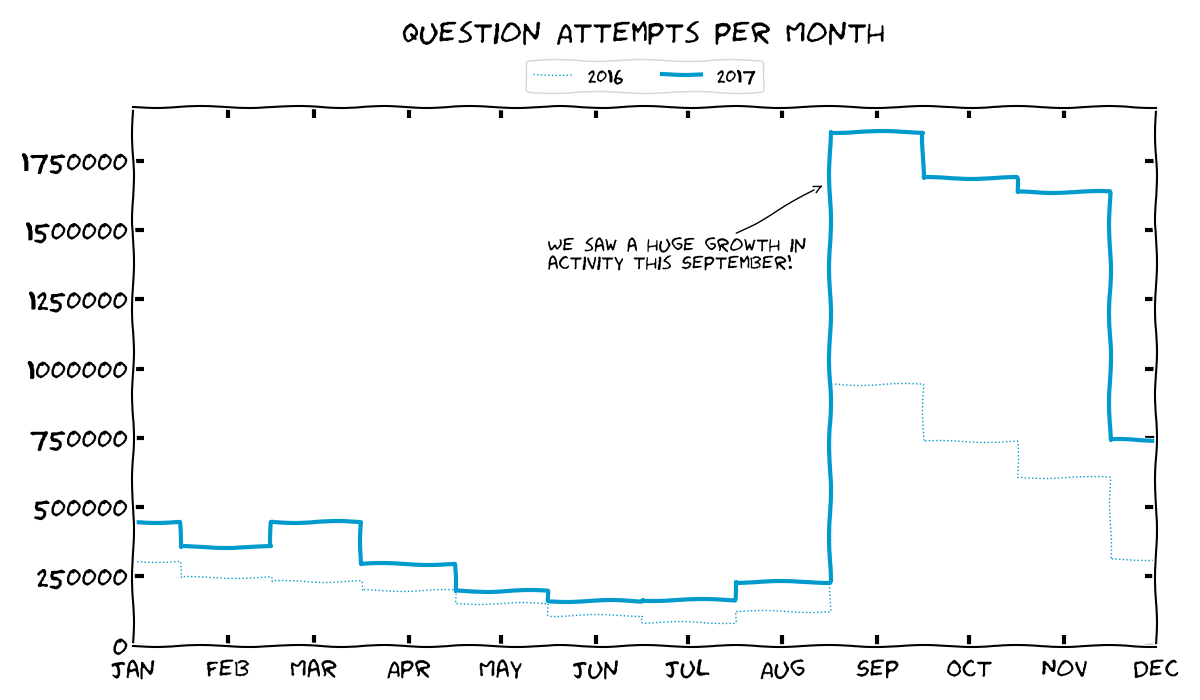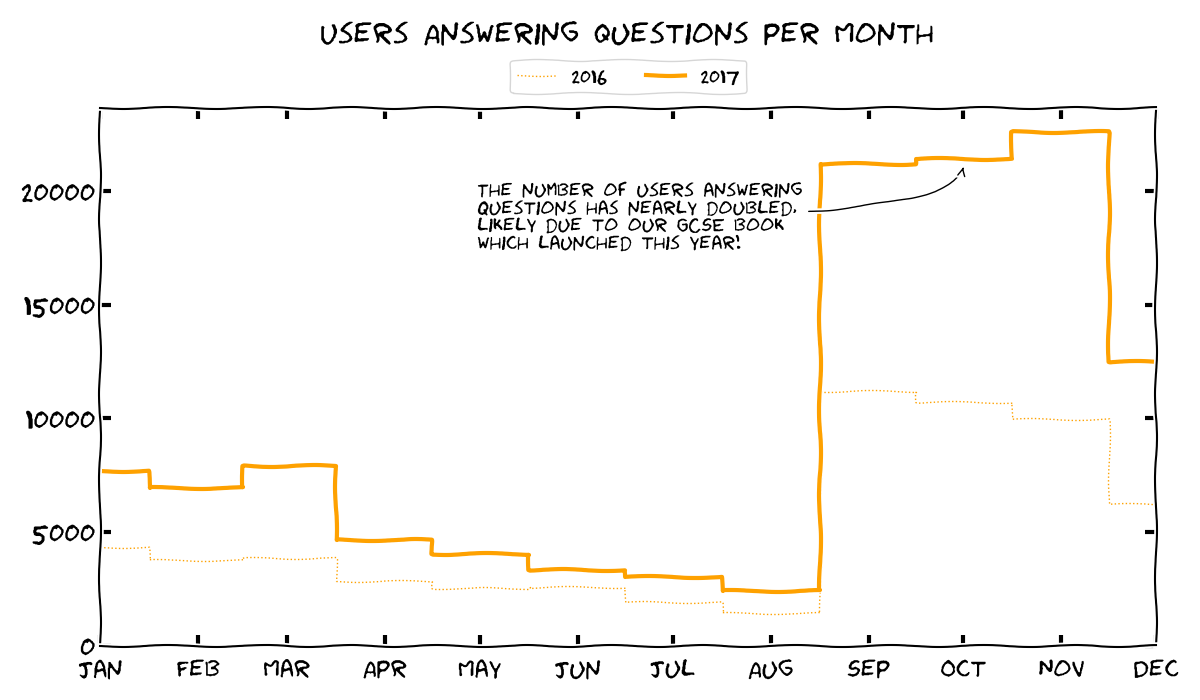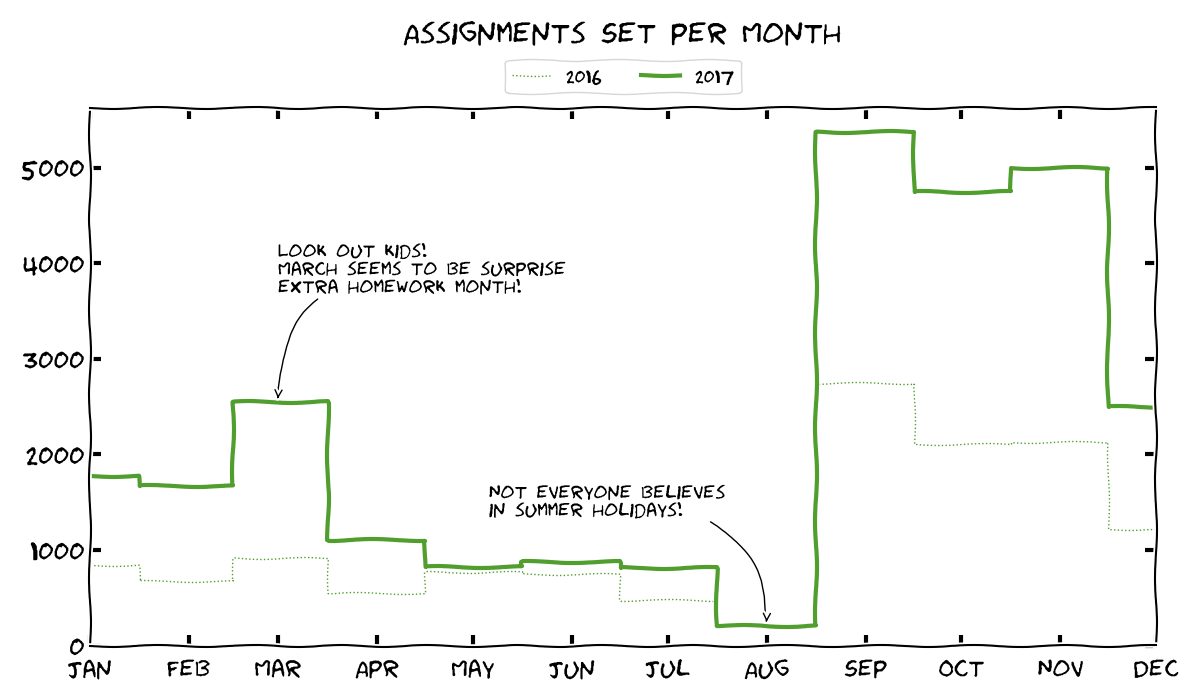Isaac Physics: 2017 in Numbers
Isaac branched out into GCSE physics too in 2017, expanding our user base considerably in the process. We had nearly 60,000 more users sign up, and saw more than 3.4 million question parts answered by 57,750 active students! (Again, about 20% of our new users haven’t answered any questions yet!).
| 8,717,950 | Question attempts made |
| 1,989,650 | Hints viewed |
| 185,600 | Concept page views |
| 83,150 | Hint videos watched |
| 58,500 | New registered users |
| 57,750 | Users answering questions |
| 28,800 | Assignments set |
| 13,250 | Password resets sent |
| 6,350 | Groups created |
| 1,800 | Teachers setting assignments |
| 1,000 | Commits to the website codebase |
| 718 | Students attending workshops |
| 292 | Teachers completing CPD |
| 132 | Minutes of server downtime |
| 70 | Isaac student workshops |
| 26 | Isaac teacher CPD events |
| 6 | New Isaac team members |
The question attempt graph looks similar to last year, only with about twice the activity:

We also looked at how many of our students and teachers were active in answering questions through the year:

We also saw even more homework set by our teachers this year:

Looking at the breakdown by subject area, you can really see the GCSE material take off:

Our most popular ordinary physics question was the Level 1 Waves question Finding Wave Speed, with 7,375 attempts by 1,958 people; our least popular was Rods, Rings and Strings, a fiendish Level 6 Statics question which was attempted 122 times by 18 people.
From our maths questions, the most popular question was Introducing Dimensional Analysis, in Level 2 Algebra, which saw 1,567 attempts at its two parts from 366 people. The maths question tried by the fewest people was the Level 2 Functions question Sinusoidal wave, with 33 attempts by 10 people.
The overall most popular question last year though was from one of our books. Essential Pre-Uni Physics A1: the first page of our A-Level book to be precise, where 8,252 people made 185,122 attempts at its twelve sections. It featured in 760 assignments set by 471 different teachers, which may explain its ‘popularity’!
Here’s to an even more exciting 2018!
Numbers in the table have been rounded down to the nearest 50 for neatness, except for values less than 1000.
The charts were created using Python's Matplotlib and its neat XKCD-esque style settings!

James Sharkey
James is a physicist turned computer scientist, working both on the physics and computing for Isaac